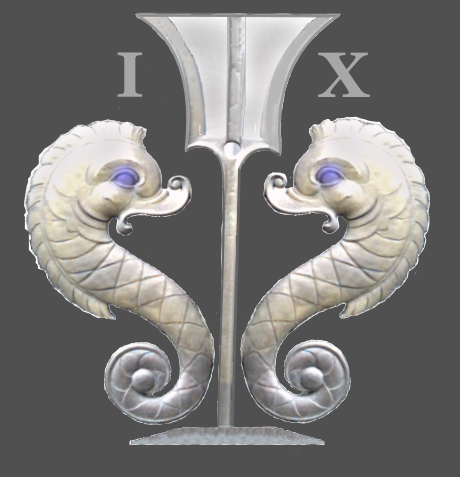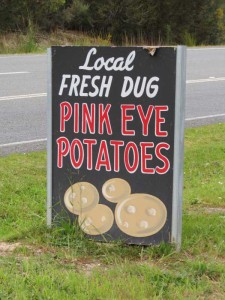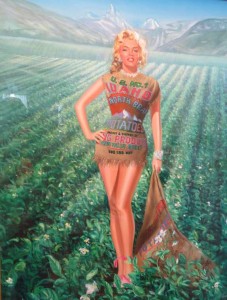Meat Pies in Tasmania
/ When I think “pies”, blueberry, apple and coconut cream come to mind. Flaky crusts with luscious fillings, smelling heavenly and lined up on the counter, ready to serve after Thanksgiving or Christmas dinner. So the first time I popped into a pie shop here hoping to find something fruity and delicious, I was very surprised to find steak, bacon and cheese pies, curried veggie pies, sausage and egg pies, chicken pies, scallop pies and beef and kidney pies, but no “pie” pies. Did I mention we're in Australia?
Pies in Australia and in New Zealand have taken on a whole new meaning for us. I'd say it was the British influence on their colonies, but of course, we were once a colony, too. The US has restaurants that specialize in outstanding pies in an ancillary way like Marie Callenders or Village Inn with huge display cases of pies as you enter. There don't seem to be any standalone pie shoppes. Australia seems to have defined a profitable niche market dedicated to meat pies that the US is obviously missing out on.
When I think “pies”, blueberry, apple and coconut cream come to mind. Flaky crusts with luscious fillings, smelling heavenly and lined up on the counter, ready to serve after Thanksgiving or Christmas dinner. So the first time I popped into a pie shop here hoping to find something fruity and delicious, I was very surprised to find steak, bacon and cheese pies, curried veggie pies, sausage and egg pies, chicken pies, scallop pies and beef and kidney pies, but no “pie” pies. Did I mention we're in Australia?
Pies in Australia and in New Zealand have taken on a whole new meaning for us. I'd say it was the British influence on their colonies, but of course, we were once a colony, too. The US has restaurants that specialize in outstanding pies in an ancillary way like Marie Callenders or Village Inn with huge display cases of pies as you enter. There don't seem to be any standalone pie shoppes. Australia seems to have defined a profitable niche market dedicated to meat pies that the US is obviously missing out on.
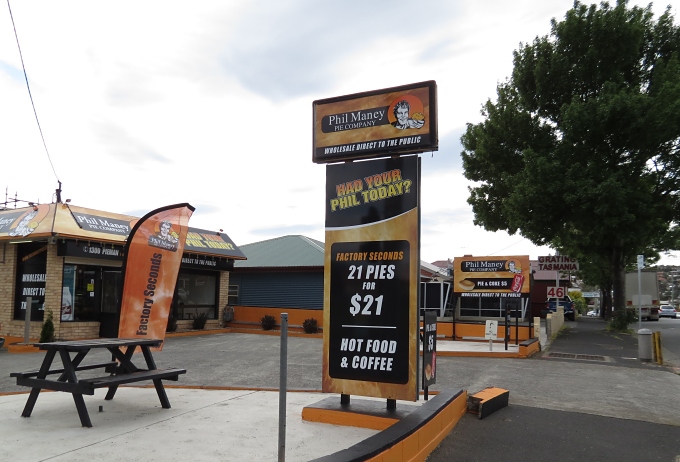 I mean we certainly have meat pies and chicken pot pies in the States. You can buy them in the frozen food case. David's Mom makes traditional Welsh pasties which are kind of like meat pies. As a kid, growing up in a French-Canadian household, we had torquay pies, a savory mince pie, around the holidays. I make Cottage Pie on board...a layered casserole of ground meat, corn and a topper of mashed potatoes. Last time I was home though, I didn't notice any fast food pie shops lining the streets, but I may have missed them. Here you can buy pies most anywhere...even the 7-11's have warm pies sitting in heated cases just waiting to be someone's lunch.
I mean we certainly have meat pies and chicken pot pies in the States. You can buy them in the frozen food case. David's Mom makes traditional Welsh pasties which are kind of like meat pies. As a kid, growing up in a French-Canadian household, we had torquay pies, a savory mince pie, around the holidays. I make Cottage Pie on board...a layered casserole of ground meat, corn and a topper of mashed potatoes. Last time I was home though, I didn't notice any fast food pie shops lining the streets, but I may have missed them. Here you can buy pies most anywhere...even the 7-11's have warm pies sitting in heated cases just waiting to be someone's lunch.
While we were in Hobart looking for boat parts (unusual, huh?), I saw a Phil Maney Pie Company and decided to poke my head in to see what they had to offer. He has a big sign on the roof that asks “Have you had your Phil today?” and another that says “21 pies for $21 (factory seconds)”. What's a factory second pie anyway? I needed to get to the bottom of this. I went in with my camera and said I was an American and wondered if I could take some pictures of Aussie pies. Well, it seems Phil Maney himself was there. He couldn't have been more obliging. I got my photos and a picture of him, too. I did not join the Phrequent Pie-ers Club (Buy 5, get one free). A factory second, by the way, is one which doesn't look “perfect”. I was thinking later that perhaps if they have 21 of them available at any one time, maybe someone's not watching what they're doing. But that's just me.
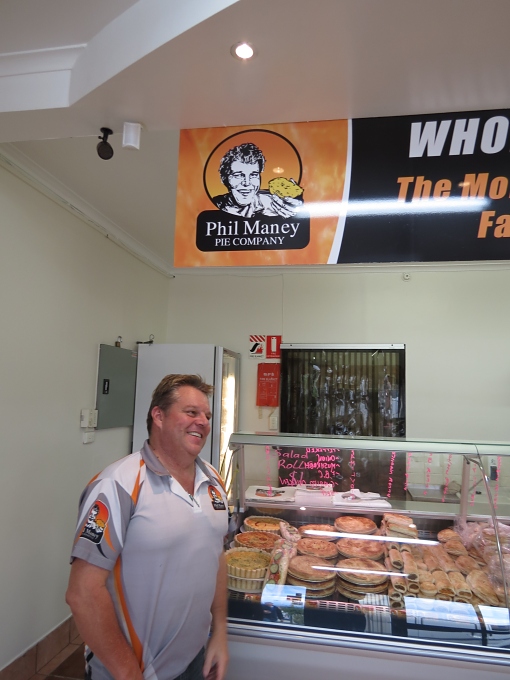 I looked on the internet. There are several pie shop franchising opportunities available here in Australia. There's Pie Face and Dinky Di's. There's Original Fried Pie, Big Dad's, King Pie and even a “How to Start Your Own Pie Shop” download, just in case you had a notion to do this.
I looked on the internet. There are several pie shop franchising opportunities available here in Australia. There's Pie Face and Dinky Di's. There's Original Fried Pie, Big Dad's, King Pie and even a “How to Start Your Own Pie Shop” download, just in case you had a notion to do this.
The absolute ultimate pie in my book though is the pie floater. Now “floater” has a significantly different connotation in American English. In South Australia especially, a pie floater is a meat pie covered with a generous amount of catsup and floating upside down in thick split pea soup. I know it sounds absolutely appealing, but I haven't tried it yet. I'm going to have to work up to it.
